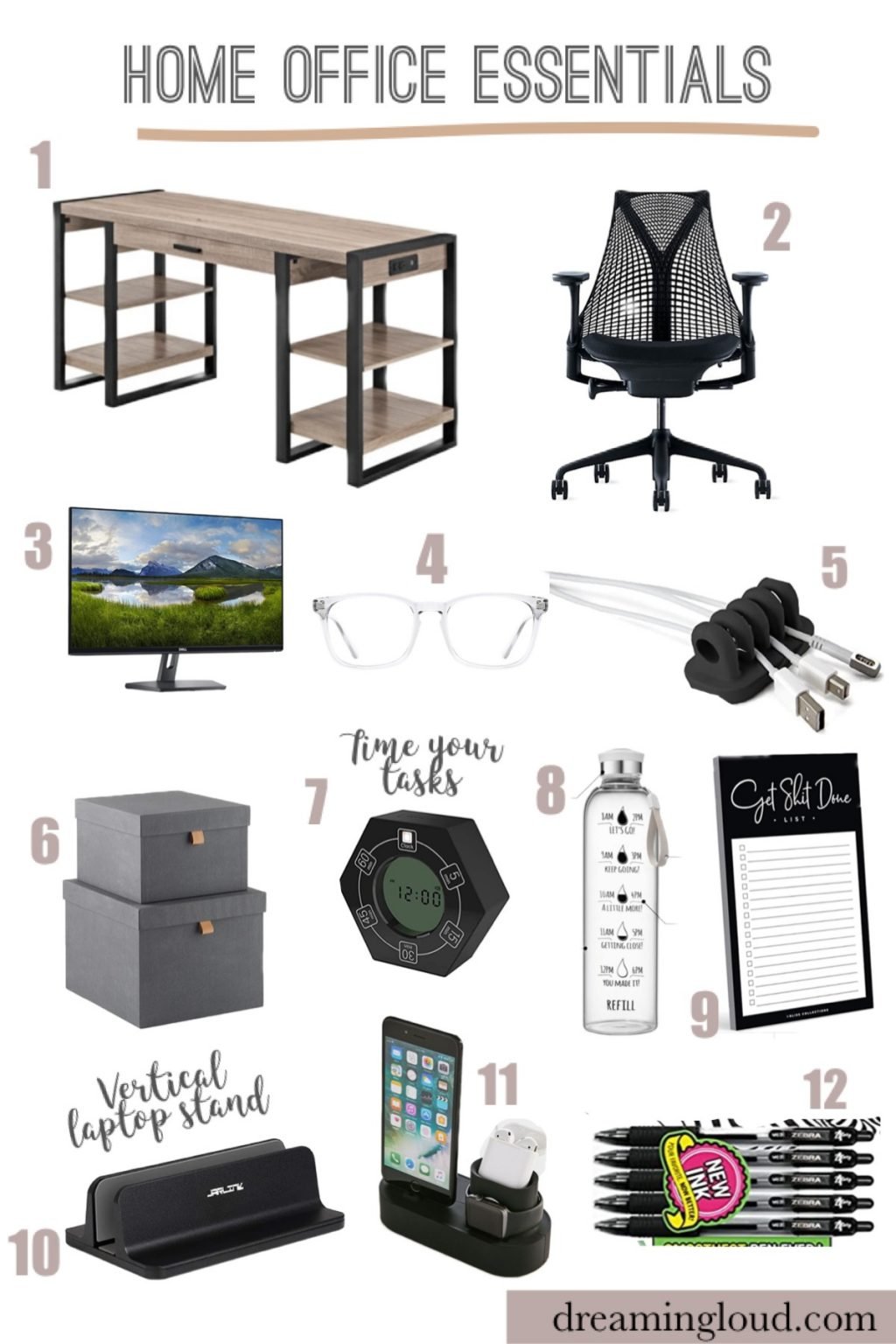Welcome to the comprehensive guide: [- Home Office Essentials: The Ultimate Guide to Optimizing Your Workspace]. Within these pages, you’ll discover the secrets to creating a home office that seamlessly blends productivity, comfort, and inspiration. From defining the perfect space to selecting the optimal lighting, computer system, and ergonomic chair, this guide will provide you with the knowledge and insights necessary to transform your home workspace into a sanctuary of efficiency and well-being.
Key Takeaways:
- Choose an ergonomic or standing desk for posture support and adjustability.
- Invest in an office chair that provides comfort and ergonomic support.
- Consider a laptop, keyboard, mouse, and monitor for essential equipment.
- Ensure a stable WiFi connection for uninterrupted internet access.
- Organize documents with a filing cabinet and keep your desk tidy with a desktop organizer.
- Elevate your laptop with a stand or support table for better ergonomics.
- Utilize notepads and writing utensils for note-taking and jottings.
- Connect multiple devices and protect them from voltage surges with a USB power strip.
- Enhance focus and communication with noise-canceling headphones with a microphone.
Home Office Essentials

Creating a productive and inspiring home office requires equipping yourself with the right home office essentials. Here is a comprehensive guide to help you optimize your workspace:
Furniture for Comfort and Ergonomics
Your home office furniture should prioritize comfort and ergonomics. Invest in an adjustable ergonomic or standing desk that allows you to alternate between sitting and standing, promoting better posture and reducing the risk of muscle strain. A supportive office chair with adjustable lumbar support and armrests will keep you comfortable throughout long hours at your desk.
Technology for Efficiency
A reliable laptop is essential for running office applications and accessing files. Choose a laptop with enough storage and processing power to handle your workload. A separate keyboard and mouse will improve typing and navigation comfort. A large monitor will provide ample screen space, reducing eye strain and improving productivity.
Connectivity for Seamless Communication
Ensure a stable and secure internet connection with a reliable WiFi network. This is crucial for video conferencing, file sharing, and accessing cloud-based applications.
Accessories for Organization and Convenience
Keep your home office organized and clutter-free. A filing cabinet stores documents and keeps your workspace tidy. A laptop stand or support table elevates your laptop to eye level, improving ergonomics and reducing neck strain. A notepad and writing utensils provide a convenient way to jot down notes and ideas. A desktop organizer helps keep your desk organized and accessible.
Other Essential Enhancements
Invest in a USB power strip with surge protection to extend power outlets and protect your devices from voltage spikes. Noise-canceling headphones with a microphone provide a distraction-free environment for focused work and clear communication during calls.
By incorporating these home office essentials, you can create a workspace that supports your productivity, well-being, and overall success.
For a comfortable and productive workspace, you’ll need the best home office setup. Additionally, organization is key, so consider implementing home office storage solutions to keep your valuable documents and belongings safe.
A Computer System

When establishing a home office setup, one of the most critical elements to consider is the selection of an appropriate computer system. A reliable and efficient computer system will serve as the backbone of your productivity, enabling you to seamlessly manage tasks and achieve your professional goals. Here are key considerations for selecting a computer system for your home office:
Types of Computer Systems
Laptop:
- Pros: Portability, compact size, and wireless connectivity.
- Cons: Limited screen size, potential for overheating, and shorter battery life.
Desktop PC:
- Pros: Customizable, more powerful components, and expandable storage.
- Cons: Less portable, takes up more space, and requires more cables.
Key Specifications
Processor: The central processing unit (CPU) handles the overall performance of the computer. Choose a processor that meets the demands of your software and applications.
Memory (RAM): RAM helps the computer store and run programs. Sufficient RAM ensures smooth operation and prevents slowdowns.
Storage (HDD or SSD): Hard disk drives (HDDs) offer ample storage capacity, while solid-state drives (SSDs) provide faster performance. Consider your data storage needs and budget.
Graphics Card: For tasks involving graphics-intensive software or gaming, a dedicated graphics card can enhance performance and reduce lag.
Operating System
Choose an operating system (OS) that is compatible with your software and personal preferences. Popular options include Windows, macOS, and Linux.
Peripherals
Essential peripherals for a computer system include a monitor, keyboard, and mouse. Consider ergonomic options to maintain comfort and prevent strain. Additionally, a printer/scanner and webcam may be necessary for document handling and video conferencing.
Key Takeaways:
- Selecting the right computer system is crucial for the efficiency and performance of your home office.
- Consider the type of computer system (laptop or desktop) that suits your needs.
- Pay attention to key specifications such as processor, memory, storage, and graphics card.
- Choose an operating system compatible with your software and preferences.
- Don’t overlook essential peripherals like monitors, keyboards, and mice.
Sources:
- How to Choose the Best Computer for Home or Office
- How to Build a Computer: The Complete Guide
A Comfortable Chair
If you spend hours at your home office, A Comfortable Chair becomes an indispensable investment. It can mean the difference between a productive, pain-free day and a day filled with discomfort and hindered work. Here’s how to choose the best possible chair for your home office:
- Ergonomic Support:
-
A chair that supports the natural curve of your spine, providing optimal comfort to relieve pressure points and prevent muscle strains.
-
Adjustable Features:
-
A chair that adjusts to your specific body dimensions and preferences, including seat height, backrest angle, and armrest position.
-
Breathable Fabrics:
- A chair made of materials like mesh or leather that allows air to circulate, preventing heat build-up and discomfort, especially during long work sessions.
Key Takeaways:
- Prioritize chairs with ergonomic support to ensure spinal alignment and comfort.
- Adjustable features like seat height, backrest angle, and armrests allow you to tailor the chair to your body and workstyle.
- Choose breathable fabrics to prevent discomfort caused by heat retention.
Sources:
– Ergonomic Health Association: The 50 Best Home Office Essentials List
– Architectural Digest: 14 Best Office Chairs: Ergonomic Picks Tested and Reviewed
FAQ
Q1: What is the optimal lighting for a home office?
A1: Natural light is best, but if that’s not available, use a combination of overhead and task lighting to provide ample and glare-free illumination.
Q2: What are the most important features to look for in a computer system for a home office?
A2: A powerful processor, plenty of RAM, and a large storage capacity are essential for efficient multitasking and data management.
Q3: What type of chair is best for a comfortable home office?
A3: Choose an ergonomic chair with adjustable seat height, backrest, and armrests to provide proper support and minimize discomfort during extended sitting periods.
Q4: What are some tips for creating the perfect home office space?
A4: Consider the size of the space, choose furniture that fits comfortably, and incorporate personal touches to create an inspiring and productive environment.
Q5: What are some common mistakes to avoid when setting up a home office?
A5: Avoid overcrowding the space, using inadequate lighting, and neglecting proper ventilation to ensure a comfortable and efficient work environment.
- Marble Countertops Cost: What Factors Impact the Total Price? - January 2, 2026
- Small Corner Kitchen Ideas: Maximize Style In Tight Spaces - January 1, 2026
- Kitchen Counter Corner Ideas: Style Your Awkward Angles Now - December 31, 2025










